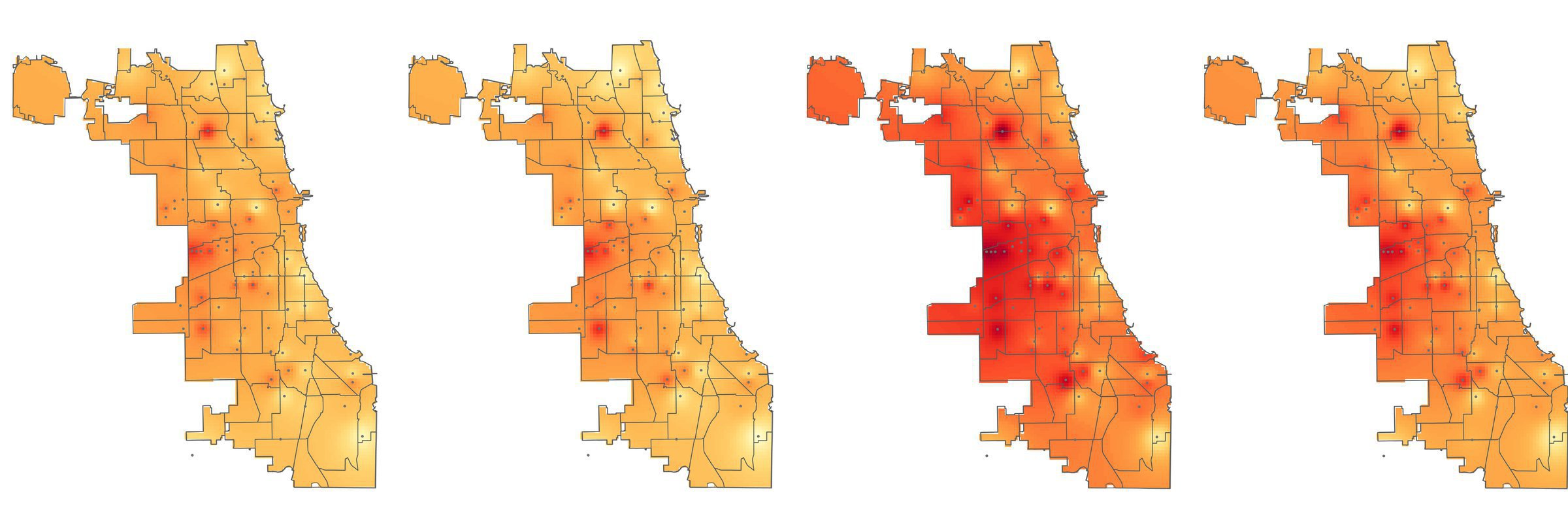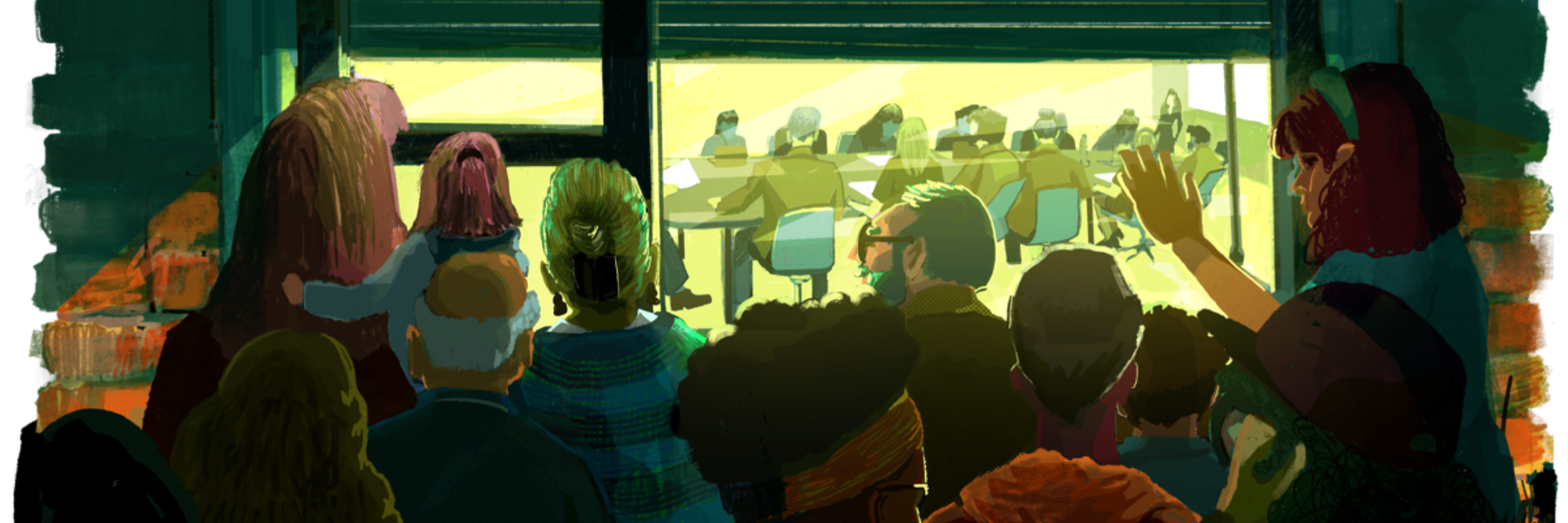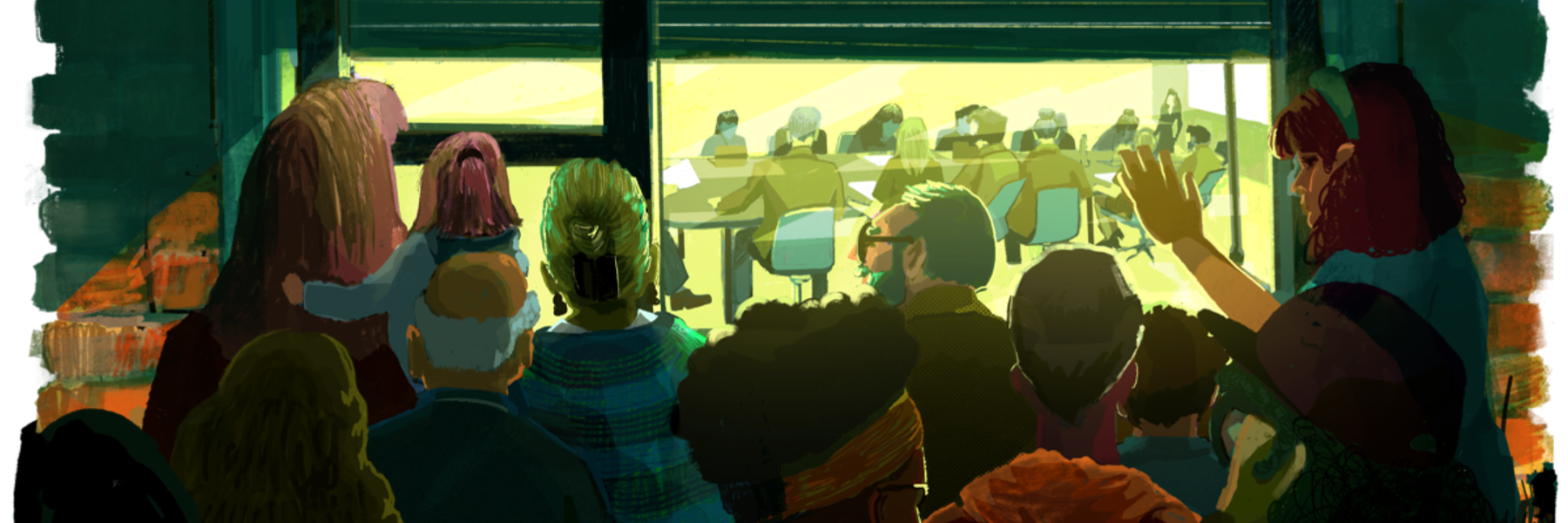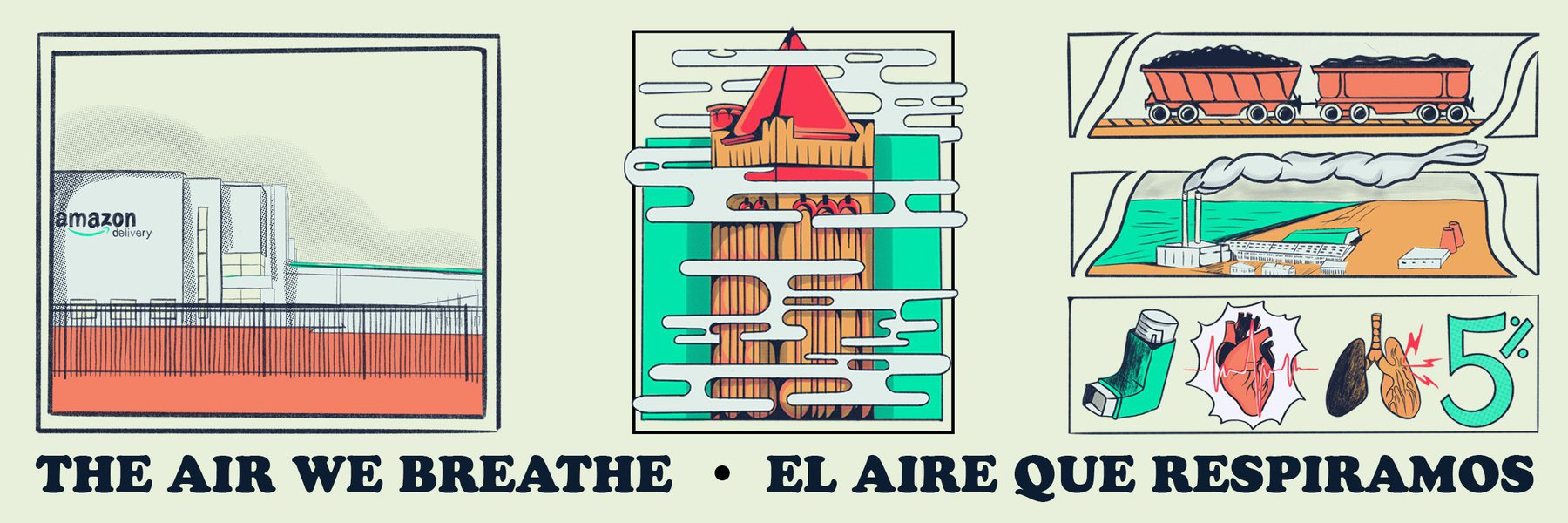A citywide project that tracked Chicago’s air pollution using more than 100 low-cost air quality sensors ended last week after the tech company Microsoft, which led the project, quietly announced to its users that it was shuttering the program.
Microsoft’s air quality monitoring program, called Project Eclipse, began in July 2021 when it placed air sensors atop bus shelters across the city in partnership with the city of Chicago, the advertising firm JCDecaux, which designs the city’s bus shelters, Chicago’s Environmental Law and Policy Center, and several community organizations. For almost two years, the sensors delivered one of the few detailed pictures of how air pollution varies by neighborhood in the U.S. New York City’s fleet of cars with air sensors and community air survey are rare examples of similar projects.
In a statement from the company, Microsoft said it decided to close its air quality initiative after its research arm, which “continuously evaluates research projects to determine directions and future investment,” had decided now was “a natural point to conclude the work.”
But the company declined to comment on whether the closure of Project Eclipse had anything to do with recent layoffs at the company, which led to 10,000 employees losing their jobs.
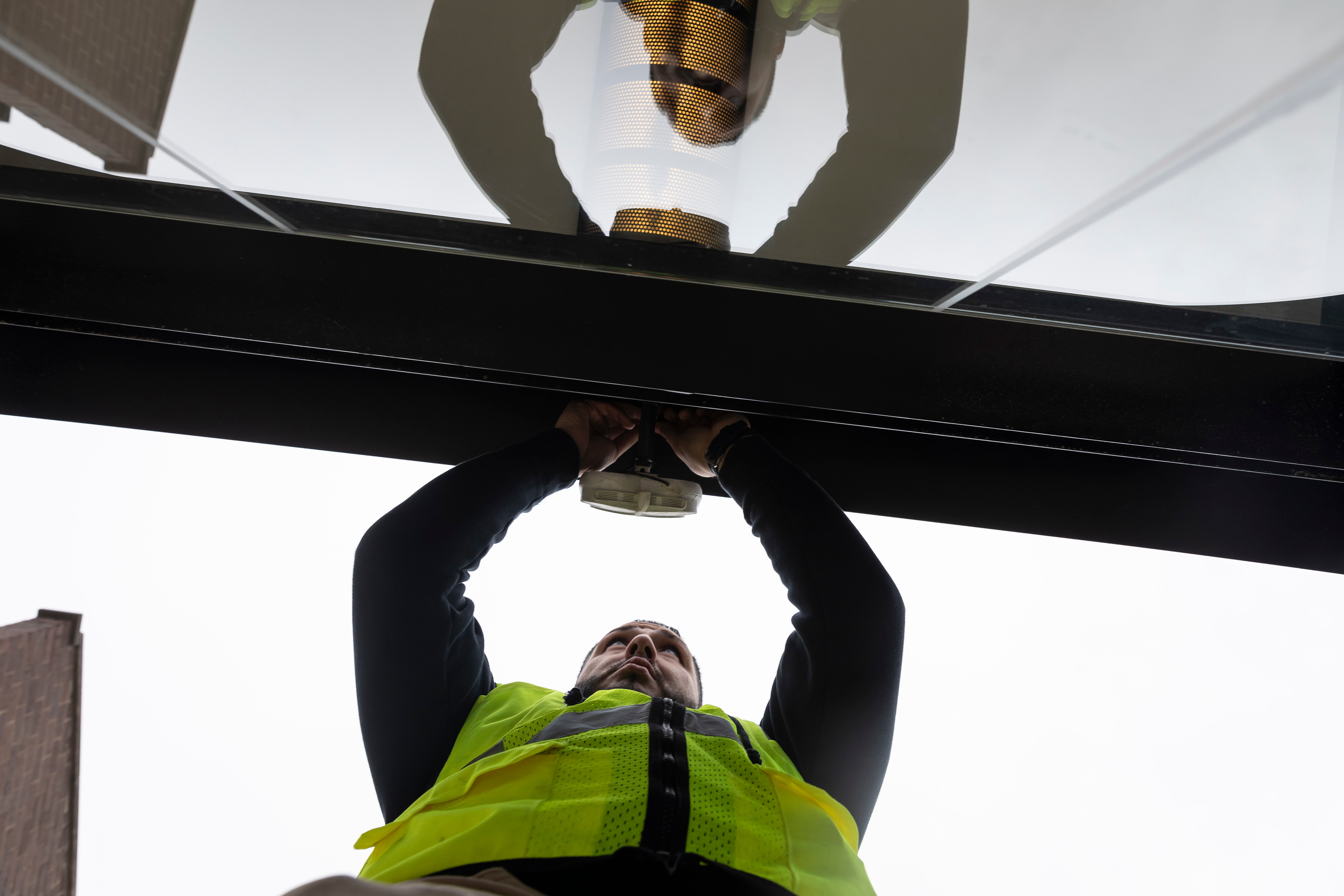
In an email response to questions, Chicago Department of Public Health spokesperson Ma’Lore Ledet said that the air quality program “came to an end as most pilot programs do,” and that the department couldn’t continue the project because it doesn’t own the intellectual property for the air sensors.
Even though the sensors will be taken down, the data recorded over the last two years will remain publicly available on Microsoft’s website.
When the Microsoft sensors are removed, the amount of air quality devices measuring the city’s air pollution will drop sharply. There are only a handful of the EPA’s gold-standard monitors in Chicago and around two dozen active PurpleAir sensors.
In a statement, Chicago’s health department said it is planning a new, separate air quality monitoring project with the goal to “establish a robust outdoor air monitoring network by 2025.”
Neighborhood-level air pollution questions left unanswered
For the scientists and community groups involved, Project Eclipse data unearthed even more questions than it answered.
Last summer, a collaboration between the Chicago Sun-Times, WBEZ, the Cicero Independiente and MuckRock revealed how much pollution varies by neighborhood, with portions of Auburn Gresham, Austin, Englewood, Irving Park and Little Village experiencing the worst air quality in the city. Later reporting quantified the impact of fireworks on the city’s air and captured unexplained spikes in pollution on the city’s Southeast Side.
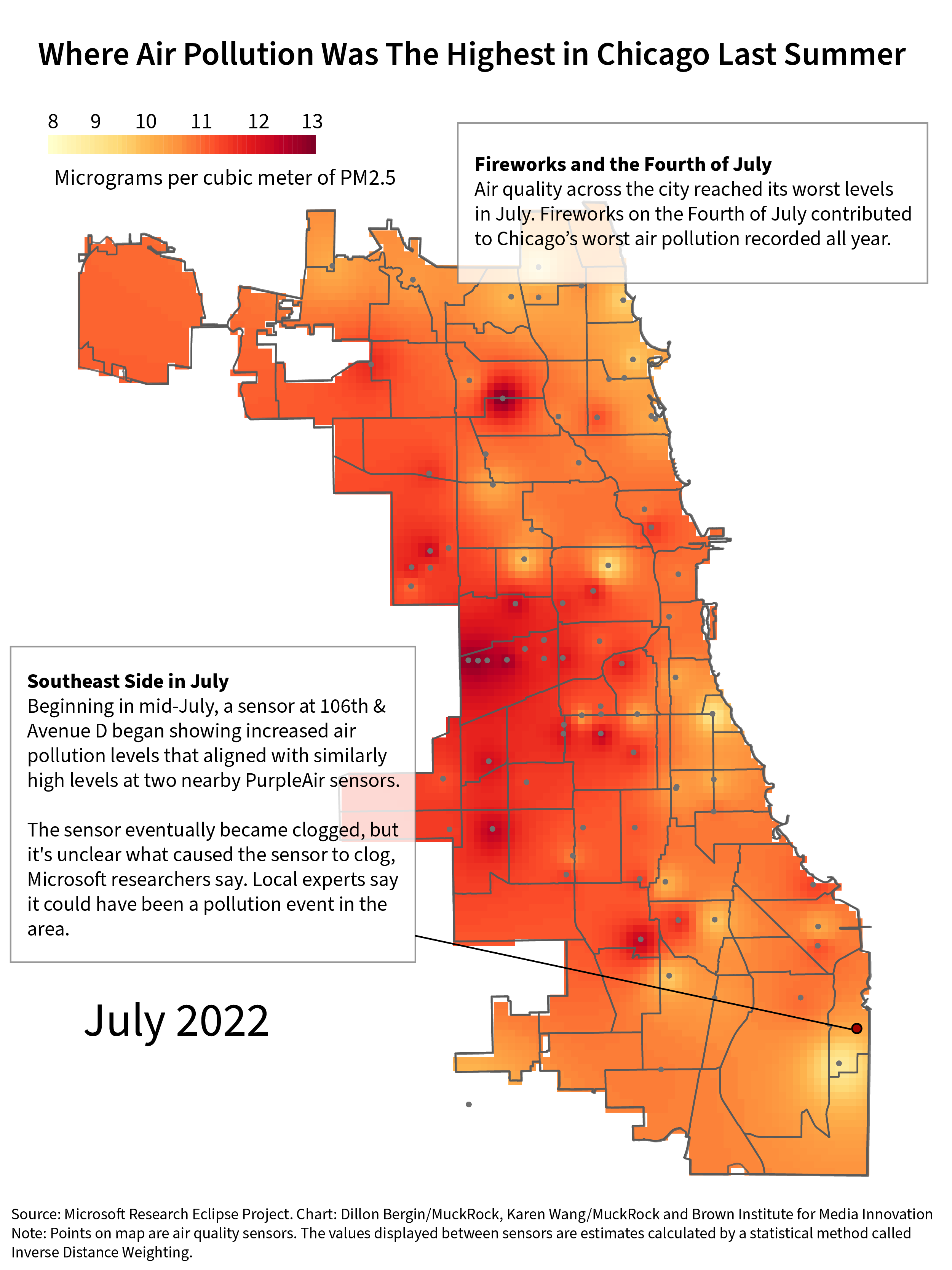
Air pollution scientists say removing the sensors is a loss for those researching the various health impacts of the city’s poor air quality.
Dr. Marynia Kolak, an assistant professor of geography at University of Illinois, Urbana-Champaign, said she is concerned that the program’s end will represent a setback to environmental research as well as Chicagoans who suffer from comparably bad air quality. Dr. Kolak has studied air quality in Chicago for several years and has been using the Project Eclipse sensor data in her own research.
“There was a lot of excitement around these efforts, and then instead of building a vision for the next five or 10 years, it all just kind of stopped,” Kolak said.
Tiffany Werner, who worked at the Environmental Law and Policy Center until this fall and helped launch the Microsoft program with local community groups, said she knew the project would end eventually but was surprised that it was ending without any plans for the sensors to be maintained by the city of Chicago or another organization.
“It’s so disappointing, because this was a pilot project that put us ahead of really any other major city,” Werner said. “This is the first time the entire city was studied at once.”
Kim Wasserman, executive director of the Little Village Environmental Justice Organization, said the group’s working relationship with Microsoft had worsened over time, after disagreements about where data would be collected and how the data would be used. This summer, the community group will place 10 of their own PurpleAir sensors throughout Little Village to make up for the gaps left behind by the Microsoft network, she said.
“It just really empowered us to realize that we have to once again do our own community science,” Wasserman said.
Chicago is experiencing a boom in the construction of warehouses, with new sources of pollution rapidly changing neighborhoods. Understanding how one neighborhood compares to another is critical, experts say, in pinpointing pollution sources and potential policy fixes.
Without the big picture that Project Eclipse provided, Werner said, it’s hard for any neighborhood of the city to say how bad its air is.
“It feels like we’re taking a step back, to where communities are now going to again be met with the argument that there’s nothing to compare it to,” Werner said.
